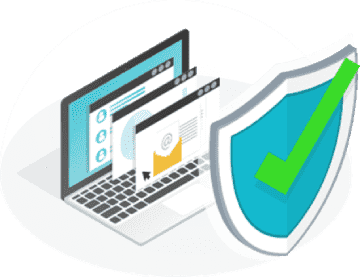Website Legit Checker
Is this website legit? How do you know a website is safe? Are you having second thoughts about purchasing from a particular online shopping site? It is reasonable to be suspicious, but it's more important to check if the website is safe and keep you safeguarded against cyber-attacks. Especially when it comes to your personal and financial details! This article takes you through some tips and tricks to help you if this website is legit.
Hackers are prowling the internet and finding innovative ways to steal information - such as creating fake yet convincing websites. Here's how to know the difference and protect yourself from potential fraudulent activity.
6 Easy Ways to Check Is This Website Legit
- Check the Domain Name
- Is the Offer Too Good To Be True?
- Check the HTTPS:// details
- Run an Online Website Security Check
- Call the Company
- Install Website Security Tools to Check Is This Website Legit
1. Check the Domain Name
Hackers try and use a reputable and prominent brand name as a domain name for their fraudulent websites. Fictitious websites look genuine enough that they can deceive the most discerning customers. These sites will use a domain name that will reference a well-known legitimate brand or product to lure interested customers into their malicious website.
Key traits of malicious websites are:
- Spelling Mistakes
- Broken English
- Grammar Issues
- Random Images that don't match the website content
2. Is the Offer Too Good To Be True?
Remember, extravagant discounts that are too good to believe are usually signs that the website is a scam. Scam websites attract customers by selling products on their sites at unbelievably inexpensive prices - way below market value.
3. Check the HTTPS:// details
While shopping online, a customer is hyper-focused on the details of a product or on ensuring their personal financial information is correct. So they fail to check whether the site is a scam.
The first step in checking the validity of the website is verifying whether the website has a secure HTTPS:// connection. A secure connection would prohibit bad guys from spying on your details. If you are using personal details to log in and if you find the website has https://connection, definitely do not proceed further.

- Further research of the website
- The company name should be found next to the URL
- There should be a padlock symbol to signify that the website is secure
- Check if the website has updated the data security certificate
4. Run an Online Website Security Check
There are simple methods to check whether websites are clean and secure. Comodo Web Inspector is an easy-to-use Website Security Checker Online Tool. You can copy-paste the URL of the website you intend to check for security and “voila” you will know if the website is secure or a scam.
5. Call the Company
After running several checks, if you are still not convinced of the legitimacy of a website. Just browse for the contact details and call the company directly. This would help you gauge if this site is legit.
6. Install Website Security Tools to Check Is This Website Legit
Using Comodo website security tools will help you stay a step ahead of malicious websites. Begin by having a comprehensive solution by downloading Comodo's complimentary Antivirus along with cWatch Web security. Comodo, a valid website checker believes that continued protection is better than a one-time cure. So we will provide any website with the cure: free malware removal! Once your website is clean, our protection plans are the most affordable in the market by providing comprehensive enterprise-level security solutions that are priced for small to medium business owners.
How to Run a Virus Scan on a Website






